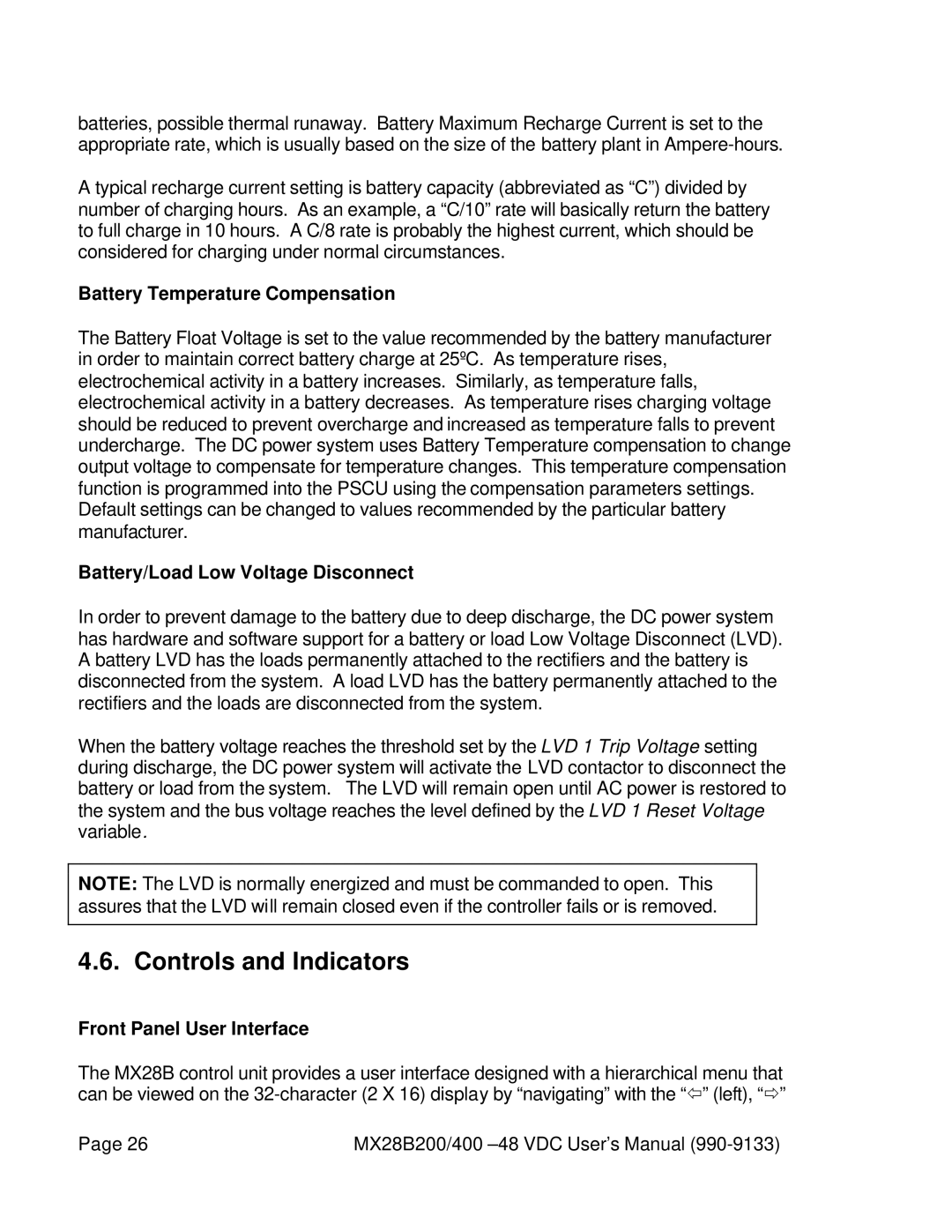
batteries, possible thermal runaway. Battery Maximum Recharge Current is set to the appropriate rate, which is usually based on the size of the battery plant in
A typical recharge current setting is battery capacity (abbreviated as “C”) divided by number of charging hours. As an example, a “C/10” rate will basically return the battery to full charge in 10 hours. A C/8 rate is probably the highest current, which should be considered for charging under normal circumstances.
Battery Temperature Compensation
The Battery Float Voltage is set to the value recommended by the battery manufacturer in order to maintain correct battery charge at 25ºC. As temperature rises, electrochemical activity in a battery increases. Similarly, as temperature falls, electrochemical activity in a battery decreases. As temperature rises charging voltage should be reduced to prevent overcharge and increased as temperature falls to prevent undercharge. The DC power system uses Battery Temperature compensation to change output voltage to compensate for temperature changes. This temperature compensation function is programmed into the PSCU using the compensation parameters settings. Default settings can be changed to values recommended by the particular battery manufacturer.
Battery/Load Low Voltage Disconnect
In order to prevent damage to the battery due to deep discharge, the DC power system has hardware and software support for a battery or load Low Voltage Disconnect (LVD). A battery LVD has the loads permanently attached to the rectifiers and the battery is disconnected from the system. A load LVD has the battery permanently attached to the rectifiers and the loads are disconnected from the system.
When the battery voltage reaches the threshold set by the LVD 1 Trip Voltage setting during discharge, the DC power system will activate the LVD contactor to disconnect the battery or load from the system. The LVD will remain open until AC power is restored to the system and the bus voltage reaches the level defined by the LVD 1 Reset Voltage variable.
NOTE: The LVD is normally energized and must be commanded to open. This assures that the LVD will remain closed even if the controller fails or is removed.
4.6. Controls and Indicators
Front Panel User Interface
The MX28B control unit provides a user interface designed with a hierarchical menu that can be viewed on the
Page 26 | MX28B200/400 |
